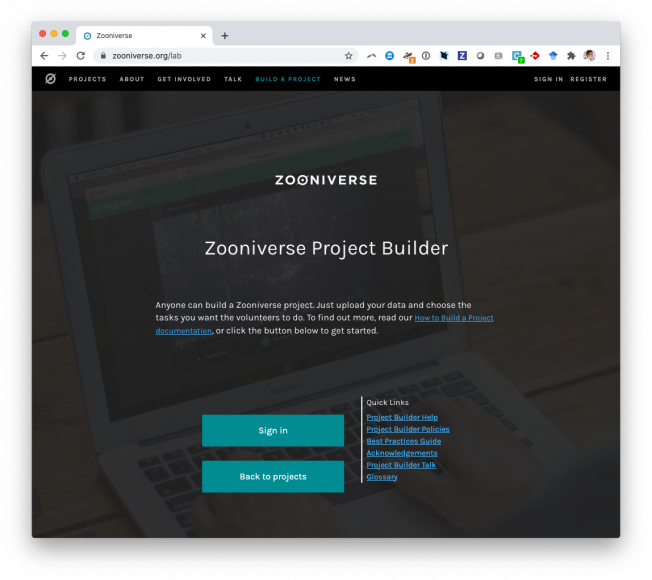PLANET HUNTERS. VIII. CHARACTERIZATION OF 41 LONG-PERIOD EXOPLANET CANDIDATES FROM KEPLER ARCHIVAL DATA* * This publication has been made possible by the participation of more than 200,000 volunteers in the Planet Hunters project. Their contributions are individually acknowledged at http://www.planethunters.org/#/acknowledgements
The Astrophysical Journal American Astronomical Society 815:2 (2015) 127
Space Warps II. New gravitational lens candidates from the CFHTLS discovered through citizen science
Monthly Notices of the Royal Astronomical Society Oxford University Press 455:2 (2015) 1191-1210
Abstract:
We report the discovery of 29 promising (and 59 total) new lens candidates from the CFHT Legacy Survey (CFHTLS) based on about 11 million classifications performed by citizen scientists as part of the first Space Warps lens search. The goal of the blind lens search was to identify lens candidates missed by robots (the RingFinder on galaxy scales and ArcFinder on group/cluster scales) which had been previously used to mine the CFHTLS for lenses. We compare some properties of the samples detected by these algorithms to the Space Warps sample and find them to be broadly similar. The image separation distribution calculated from the Space Warps sample shows that previous constraints on the average density profile of lens galaxies are robust. SpaceWarps recovers about 65% of known lenses, while the new candidates show a richer variety compared to those found by the two robots. This detection rate could be increased to 80% by only using classifications performed by expert volunteers (albeit at the cost of a lower purity), indicating that the training and performance calibration of the citizen scientists is very important for the success of Space Warps. In this work we present the SIMCT pipeline, used for generating in situ a sample of realistic simulated lensed images. This training sample, along with the false positives identified during the search, has a legacy value for testing future lens finding algorithms. We make the pipeline and the training set publicly available.Space Warps: I. Crowd-sourcing the discovery of gravitational lenses
Monthly Notices of the Royal Astronomical Society Oxford University Press 455:2 (2015) 1171-1190
Abstract:
We describe SpaceWarps, a novel gravitational lens discovery service that yields samples of high purity and completeness through crowd-sourced visual inspection. Carefully produced colour composite images are displayed to volunteers via a webbased classification interface, which records their estimates of the positions of candidate lensed features. Images of simulated lenses, as well as real images which lack lenses, are inserted into the image stream at random intervals; this training set is used to give the volunteers instantaneous feedback on their performance, as well as to calibrate a model of the system that provides dynamical updates to the probability that a classified image contains a lens. Low probability systems are retired from the site periodically, concentrating the sample towards a set of lens candidates. Having divided 160 square degrees of Canada-France-Hawaii Telescope Legacy Survey (CFHTLS) imaging into some 430,000 overlapping 82 by 82 arcsecond tiles and displaying them on the site, we were joined by around 37,000 volunteers who contributed 11 million image classifications over the course of 8 months. This Stage 1 search reduced the sample to 3381 images containing candidates; these were then refined in Stage 2 to yield a sample that we expect to be over 90% complete and 30% pure, based on our analysis of the volunteers performance on training images. We comment on the scalability of the SpaceWarps system to the wide field survey era, based on our projection that searches of 105 images could be performed by a crowd of 105 volunteers in 6 days.Radio Galaxy Zoo: host galaxies and radio morphologies derived from visual inspection
Monthly Notices of the Royal Astronomical Society Oxford University Press 453:3 (2015) 2326-2340
Abstract:
We present results from the first twelve months of operation of Radio Galaxy Zoo, which upon completion will enable visual inspection of over 170,000 radio sources to determine the host galaxy of the radio emission and the radio morphology. Radio Galaxy Zoo uses $1.4\,$GHz radio images from both the Faint Images of the Radio Sky at Twenty Centimeters (FIRST) and the Australia Telescope Large Area Survey (ATLAS) in combination with mid-infrared images at $3.4\,\mu$m from the {\it Wide-field Infrared Survey Explorer} (WISE) and at $3.6\,\mu$m from the {\it Spitzer Space Telescope}. We present the early analysis of the WISE mid-infrared colours of the host galaxies. For images in which there is $>\,75\%$ consensus among the Radio Galaxy Zoo cross-identifications, the project participants are as effective as the science experts at identifying the host galaxies. The majority of the identified host galaxies reside in the mid-infrared colour space dominated by elliptical galaxies, quasi-stellar objects (QSOs), and luminous infrared radio galaxies (LIRGs). We also find a distinct population of Radio Galaxy Zoo host galaxies residing in a redder mid-infrared colour space consisting of star-forming galaxies and/or dust-enhanced non star-forming galaxies consistent with a scenario of merger-driven active galactic nuclei (AGN) formation. The completion of the full Radio Galaxy Zoo project will measure the relative populations of these hosts as a function of radio morphology and power while providing an avenue for the identification of rare and extreme radio structures. Currently, we are investigating candidates for radio galaxies with extreme morphologies, such as giant radio galaxies, late-type host galaxies with extended radio emission, and hybrid morphology radio sources.The Red Radio Ring: a gravitationally lensed hyperluminous infrared radio galaxy at z = 2.553 discovered through the citizen science project Space Warps
Monthly Notices of the Royal Astronomical Society Oxford University Press (OUP) 452:1 (2015) 502-510



